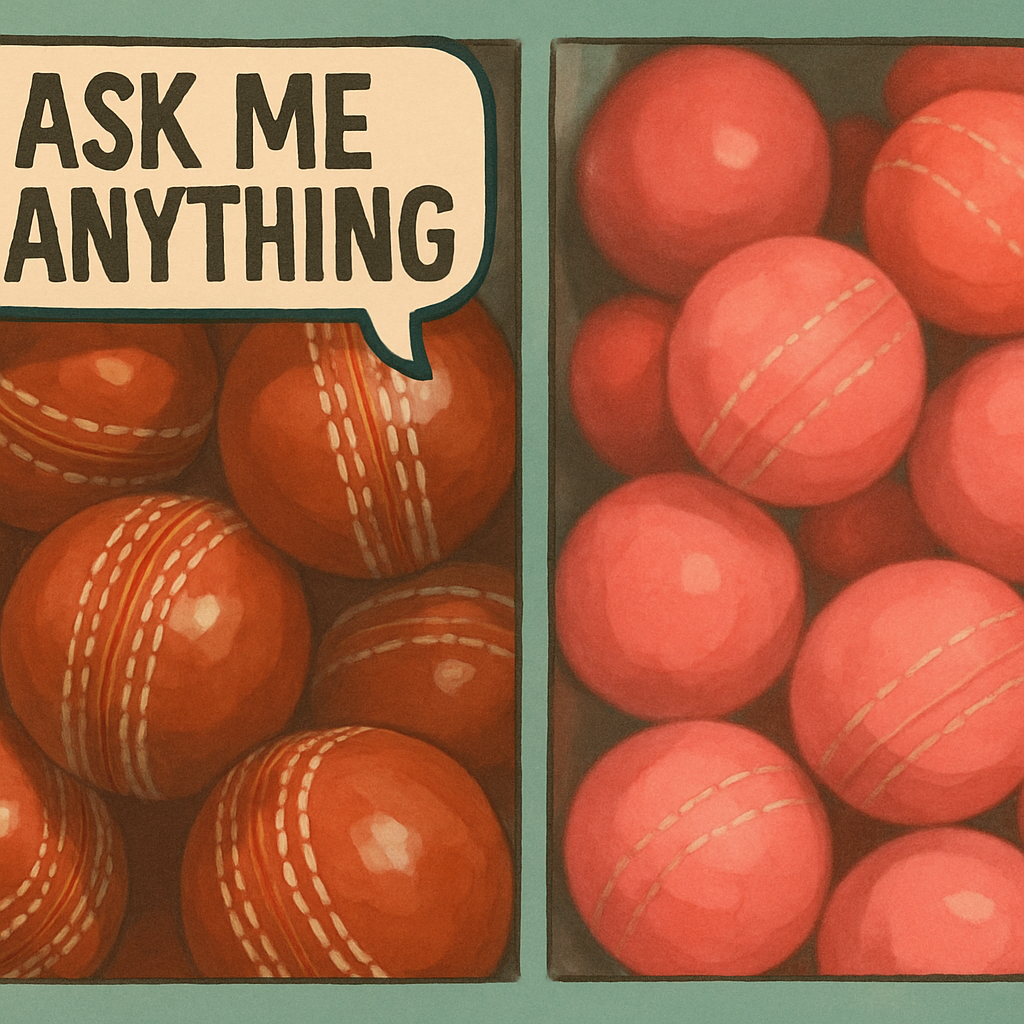LONDON — Cricket, a sport steeped in tradition, has seen subtle yet significant changes over the years—none more visually striking than the introduction of red, white, and pink cricket balls. But do these colored balls behave differently on the pitch? BBC Sport investigates whether the hue of the ball impacts its performance, swing, durability, and visibility under varying conditions.
The Evolution of Cricket Ball Colors
Traditionally, cricket was played with a red leather ball, which remained the standard for over a century. However, the advent of limited-overs cricket in the 1970s introduced the white ball to improve visibility under floodlights. More recently, the pink ball was developed to address the challenges of day-night Test matches. "Each color was introduced to solve a specific problem," says Dr. Simon Rainsford, a sports scientist specializing in cricket equipment. "But with those solutions came new variables in how the ball behaves."
The Red Ball: The Classic Performer
The red cricket ball, made from high-quality leather and hand-stitched, is renowned for its durability and pronounced swing, particularly in Test matches. Its behavior is influenced by:
- Swing and seam movement: The red ball tends to swing more prominently in overcast conditions due to its pronounced seam and the way it interacts with moisture in the air.
- Durability: It maintains its shape and hardness longer, making it ideal for the 80-over lifespan in Test cricket.
- Visibility: Best suited for daylight play, as it can become difficult to track under artificial lighting.
Former England fast bowler James Anderson notes, "The red ball is predictable—it does what you expect when conditions are right. But once the lacquer wears off, it becomes a real challenge for bowlers to keep it swinging."
The White Ball: Designed for Limited-Overs Cricket
The white ball was introduced primarily for visibility in day-night ODIs and T20s. However, its behavior differs significantly from the red ball:
- Early swing but quick deterioration: The white ball tends to swing early but loses its shine and hardness faster, often requiring replacement after 30-40 overs.
- Higher visibility under lights: Designed for floodlit matches, it remains clearer to players and spectators in low-light conditions.
- More pronounced reverse swing: Due to its softer leather, it can reverse swing earlier in the innings.
Australian cricketer Pat Cummins observes, "The white ball behaves like a different beast altogether—especially under lights, where the dew can make it skid off the surface unpredictably."
The Pink Ball: A Hybrid Solution
The pink ball was engineered to bridge the gap between red and white balls, specifically for day-night Tests. Its unique characteristics include:
- Enhanced visibility: Designed to be seen clearly in both daylight and under floodlights.
- Durability closer to the red ball: It retains its hardness longer than the white ball but still requires careful maintenance.
- Pronounced seam movement: Early reports suggested it swung excessively, but manufacturers have refined its behavior over time.
Indian captain Virat Kohli has commented, "The pink ball is a tricky one—it does a lot in the first session under lights, but if you survive that phase, batting becomes easier. It’s still evolving, and players are adapting."
Manufacturer Adjustments
Manufacturers like Kookaburra, Dukes, and SG have tweaked the pink ball’s composition to balance visibility and performance. "We’ve adjusted the dye and lacquer to ensure it doesn’t scuff too quickly," explains Kookaburra’s product development head, David Pryles. "But it’s a work in progress—no ball is perfect for every condition."
Comparative Analysis: Key Differences
A 2023 study by the University of Portsmouth’s Sports Engineering Lab found measurable differences:
- Swing deviation: Red balls swung 12% more than pink balls in humid conditions.
- Durability: White balls showed 30% more wear after 30 overs compared to pink balls.
- Visibility ratings: Pink balls scored highest in twilight conditions, while red balls were rated poorest under floodlights.
Player and Umpire Perspectives
Players and umpires have mixed opinions. England’s Joe Root prefers the red ball for its consistency, while New Zealand’s Kane Williamson appreciates the pink ball’s adaptability. Umpire Marais Erasmus notes, "The pink ball can be harder to judge in certain lights, especially when it gets older. It’s a learning curve for everyone."
Conclusion: Does Color Matter?
While all three balls serve their intended purposes, their differences are undeniable. The red ball remains the gold standard for Tests, the white ball excels in limited-overs cricket, and the pink ball is carving its niche in day-night Tests. As technology advances, manufacturers may further refine their designs, but for now, "the color of the ball can dictate the nature of the game," concludes BBC Sport’s cricket analyst Jonathan Agnew.

